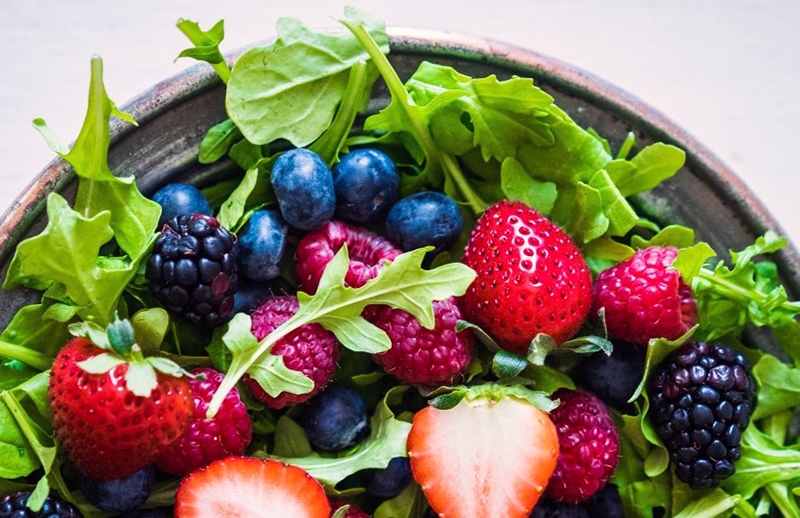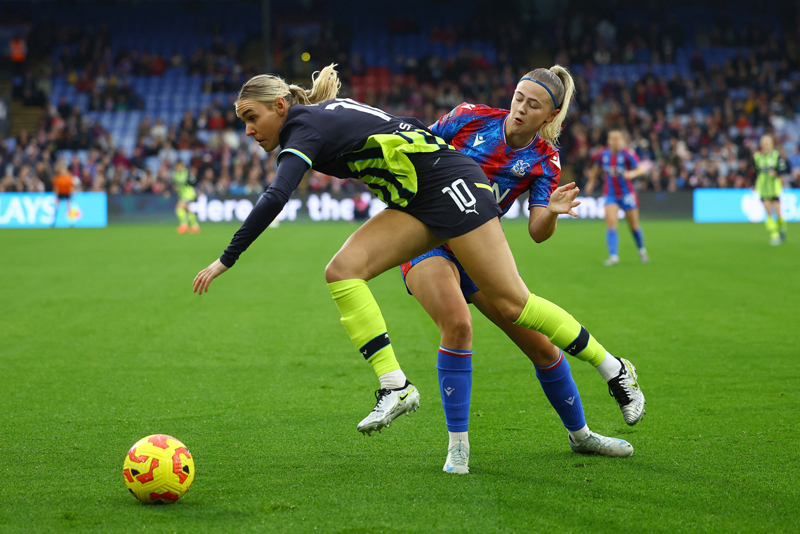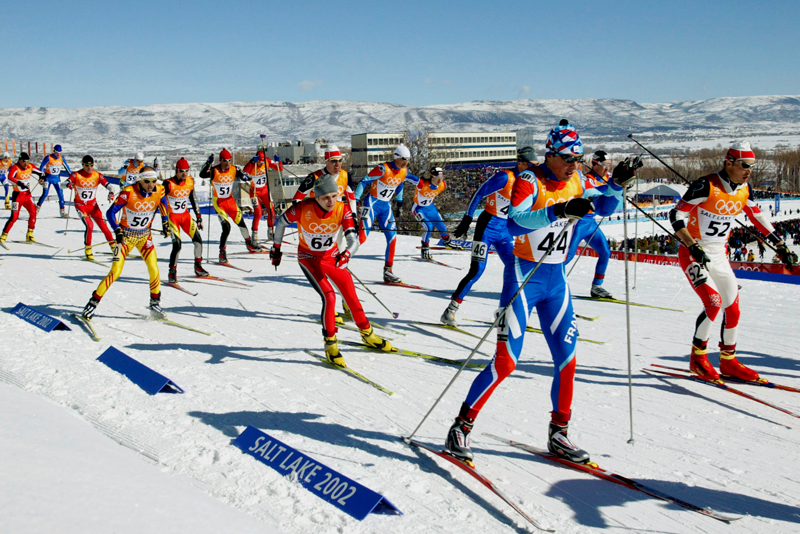The unfolding story of antioxidant nutrition for athletes is full of twists and turns. Just a couple of decades ago, the word ‘antioxidant’ was almost unheard of by athletes and coaches. But as nutritional science began to unravel the role of these compounds in protecting and enhancing cell performance and longevity, it soon became apparent that athletes might have increased antioxidant requirements because of their increased throughput of oxygen during training and competition.
However, more recent research has muddied the waters considerably, as evidence has emerged that large single doses of antioxidants can actually increase the markers of oxidative damage and slow athletes down (see PP 198, June 2004)! When it comes to antioxidants, more is not always better!
But there is a further twist to the story, because other recent research has suggested that antioxidant supplementation may have some short-term beneficial effects on recovery from exercise – particularly on post-exercise muscle soreness and dysfunction following ‘unfamiliar’ exercise. This is a very different proposition from the long-term protective benefits that have so far underpinned the use of antioxidant supplements by athletes (see box below).
ANTIOXIDANTS AND ATHLETES
Chemically speaking, oxygen is amazing stuff. Its special reactivity provides us with the energy required to sustain life, including the ability to power movements and muscular contraction. This explains why oxygen – and the ability to absorb, transport and use it – is so important to athletes, who need lots of the stuff to sustain maximum power and work outputs.However, the oxygen molecule is a double-edged sword, because this same chemical reactivity can also wreak havoc in the cells by means of the potentially destructive molecules called free radicals, which are produced unavoidably as a consequence of harnessing the chemical energy of oxygen within the body. Free radical damage is believed to be a major factor in ageing, degeneration and many diseases.
Fortunately, the human body comes equipped with a number of systems capable of deactivating the free radicals produced as a result of oxygen metabolism, and dissipating their energy harmlessly. Collectively known as the ‘antioxidant defence system’, these systems use both antioxidant enzymes (large protein molecules manufactured in the body) and antioxidant nutrients (consumed in the diet) to ‘soak up’ the energy of free radicals, thereby minimising damage to the body.
In recent years, there has been much speculation that athletes might be at increased risk of free radical damage, or ‘oxidative stress’. Athletes don’t just process a larger volume of oxygen than their sedentary counterparts – they also process it at a higher rate; during training, the rate of oxygen processing by the mitochondria (the energy producing furnaces in the cells) can rise by a factor of 20, placing exceptionally high demands on the antioxidant defence system. The fact that free radical generation does increase during vigorous exercise is no longer in doubt.
Muscle fibres are not perfectly resilient, and when placed under load some damage can and does occur. However, this damage can be seen as a normal and healthy response to training; during the recovery period after training, any damaged tissue is broken down and removed, then replaced with new and healthy tissue. Postexercise muscle damage is believed to be the main cause of the muscle soreness that occurs after particularly strenuous workouts, or those containing unfamiliar movement patterns.
Studies using a technique known as electron microscopy indicate that this damage occurs principally to the ‘Z-line’ regions of muscle fibres, which can be thought of as the boundaries between contractile units. Type II (fast-twitch) muscle fibres are known to suffer more damage than their type I (slow-twitch) counterparts, possibly because they have wider Z-lines and thicker connective tissue surrounding the fibre.
It has been shown that eccentric exercise (where the muscle fibres lengthen under load) produces more damage than concentric exercise (where fibres shorten under load). However, it is also known that eccentric training leads to a reduction in exercise-induced muscle damage during subsequent exercise, and this may be because of the replacement of weak fibres by stronger ones.
How is antioxidant nutrition linked with exercise-induced muscle damage? Take a muscle biopsyimmediately after a strenuous training session and you’ll certainly detect muscle damage. However, take a muscle biopsy from the same area 2-3 days later and you’ll detect even more damage! Although the initial damage that occurs is believed to be caused by mechanical strain, the delayed and additional damage is now known to occur as a result of an inflammatory response, aggravated by free radicals.
When a muscle cell is damaged, it becomes more ‘leaky’ to calcium, which then accumulates within the cell. This acts as a signal, attracting a range of immune cells, such as macrophages and monocytes, to the damaged area. These immune cells release toxins, including free radicals, to further break down the damaged areas and mop up tissue debris. In other words, the destructive power of free radicals is harnessed positively to help break down damaged tissue.
At this point, you might be feeling a bit confused. If cells containing free radicals are required to break down damaged tissues and initiate repair, surely antioxidants (which deactivate free radicals) would hinder this process?
There are two reasons why this does not happen:
- Studies suggest that an improved antioxidant status enhances the adaptive response to exerciseinduced muscle damage by increasing the concentration of the immune cells charged with initiating breakdown and repair(1);
- While the free radicals released by these cells help to break down the damaged tissue, if unchecked they can also attack adjacent healthy tissue. It’s a bit like using a sledgehammer to crack a nut: yes, it will get the job done, but it may take out your coffee table in the process! An optimally functioning antioxidant defence system, however, appears to minimise this collateral damage(2).
Although there have been anecdotal reports from athletes that vitamin C (a powerful antioxidant) seems to help recovery and reduce delayed onset muscle soreness (DOMS), scientific evidence for this effect has been thin on the ground. But in 2001 a study was carried out to examine the effects of two weeks of vitamin C supplementation on recovery from an ‘unaccustomed’ bout of exercise(3).
Sixteen male subjects were randomly assigned to either vitamin C (consuming 200mg of ascorbic acid twice a day for two weeks) or placebo. All the subjects then performed a 90-minute intermittent shuttle-running test, a protocol chosen to be significantly different from their normal exercise patterns. Most of the post-exercise blood tests showed no significant differences between the groups. However, the researchers discovered that vitamin C supplementation had modest beneficial effects on muscle soreness, muscle function and plasma concentrations of malondialdehyde (a marker for free radical damage). Furthermore, the rise in blood levels of interleukin-6 (a marker of inflammation) was considerably lower in the vitamin C group than in the controls. The researchers concluded that prolonged vitamin C supplementation did offer some modest beneficial effects on recovery from unaccustomed exercise.
However, interleukin-6 levels can also change in response to metabolic demands, and it was unclear in this study whether the lower rise in this inflammatory marker in the vitamin C group resulted from a reduced response to muscle damage or some form of interaction with the metabolic demands of the activity.
Effects of vitamin C supplementation
To clarify this question, a study carried out last year investigated the effects of vitamin C supplementation on a bout of exercise that initiated similar muscle damage but had a lower metabolic cost(4). As in the previous study, male subjects were split into vitamin C and control groups, the former taking 200mg of ascorbic acid twice a day for two weeks and the latter taking placebo. At the end of this period, the subjects completed 30 minutes of downhill running at a gradient of -18% (providing lots of eccentric muscle contractions at low energy cost) and recovery was monitored for up to three days after the exercise.The possible benefits of vitamin C supplementation may be also related to the timing and duration of the supplementation period. In another study on vitamin C, nine habitually active men completed two training sessions consisting of a 90-minute intermittent shuttle-running test, exactly as in the first study above(5). Before one test, they consumed a 1,000mg dose of ascorbic acid and before the other, an identical-looking placebo.
Although the vitamin C supplementation produced a peak of plasma vitamin C immediately after the shuttle run test, muscle soreness and markers of muscle damage and free radical activity were elevated to an equal extent after exercise in both trial conditions. The researchers speculated that such short-term supplementation might have been ineffective because it occurred at an inappropriate time; in other words, if vitamin C supplementation does protect against high metabolic post-exercise muscle soreness and damage, longer-term supplementation may be more effective than the ‘pop a pill before a workout’ approach!
Long-term studies on vitamins C and E have drawn a blank. A study of 15 experienced male distance runners looked at whether four weeks of daily supplementation with vitamin C or vitamin E could reduce markers of muscle damage following a 21k run(6). The runners were divided into two groups (vitamin or placebo) and were supplemented for four weeks before completing the first 21k run in as fast a time as possible.
After a four-week ‘washout period’, the vitamin-treated subjects crossed over and received the alternate supplement for the next four weeks. They then completed a second 21k run. No significant differences were found between the vitamin and placebo groups for a range of markers tested.
More encouraging findings
More encouraging results were obtained from another study examining the effects of antioxidant supplementation on ‘neutrophil oxidative burst’ (the capacity of the immune cells to release free radicals to help break down damaged muscle)(7). Twelve healthy endurance runners took either a placebo or an antioxidant vitamin supplement (containing 18mg beta-carotene, 900mg vitamin C and 90mg vitamin E) for seven days before a twohour treadmill run at 65% VO2max. Blood samples were drawn before and immediately after exercise and analysed for neutrophil oxidative burst activity.Neutrophil oxidative burst in the antioxidant group was significantly higher than in the placebo group after exercise, and the researchers concluded that antioxidant supplementation may be of benefit to endurance athletes for the maintenance of this particular function of the immune system.
The evidence suggests that how accustomed an athlete is to a particular mode of exercise is an important factor in determining whether extra antioxidants can reduce post-exercise muscle damage and soreness. But new evidence suggests that age and gender are also relevant.
In a very recent study on the impact of antioxidants on exercise-induced DNA damage, scientists studied 10 female and 11 male runners during a 50k ultra-marathon who had been randomly assigned to supplementation with either an antioxidant mix (1,000mg vitamin C and 400IU vitamin E) or placebo(8). Tests were conducted to assess DNA damage in blood cells known as leukocytes at a number of different times: pre-race, mid-race, two hours post-race and daily for six days afterwards.
Overall, DNA damage increased at mid-race but returned to baseline by two hours post-race, indicating that the exercise had induced transient DNA damage. There was, however, a marked difference between the men and women. Women taking the antioxidant cocktail had 62% less DNA damage at one day post-race than those on placebo. By contrast, there were no significant differences between the men at any time point, indicating that the antioxidant mix enhanced recovery in women alone. The implication is that female endurance athletes may have more to gain than men from using antioxidants to enhance post-exercise recovery.
As far as older athletes are concerned, there is evidence that exercise-induced muscle damage is more extensive than in younger ones for any given intensity/duration of exercise, but also that older athletes may have most to gain from antioxidant supplementation.
One study compared the structural muscle damage produced by 45 minutes of high-intensity eccentric exercise in young (20-30) and old (59- 63) men and found that the same intensity and duration of exercise produced significantly more muscle damage in older men(9).
Although older athletes appear to be more susceptible to exercise-induced muscle damage, they also seem to respond better to antioxidant supplementation(10). Twenty-one male volunteers were split into two age groups (22-29 and 55-74 years). The members of each group were then randomised to 48 days of supplementation with either vitamin E (800IU per day) or placebo before a downhill running session designed to accentuate damaging eccentric muscular contractions.
After the run, all subjects were monitored for 12 days for changes in responses to muscle damage. As might be expected, young subjects on placebo mounted a stronger attempt to repair damaged tissue than the older ones. However, in the vitamin E supplemented groups, the neutrophil oxidative burst response of the older group was elevated to such an extent that the differences between the two age groups effectively disappeared. The researchers concluded that vitamin E supplementation may affect the rate of repair of skeletal muscle after muscle damage and that these effects may be more pronounced in older subjects.
As with so many areas of sports nutrition research, the evidence that antioxidant supplementation can reduced post-exercise muscle damage and soreness is far from clearcut. However, it is possible to interpret these findings with a view to making useful recommendations for athletes and coaches.
An improved antioxidant intake doesn’t appear to prevent the mechanical damage induced by exercise, but in some circumstances it may be able to reduce the amount of postexercise damage that occurs as part of the repair and regeneration process.
The evidence to date suggests that for younger male athletes this beneficial effect is felt mainly when the exercise is ‘unaccustomed’, vigorous in nature and including a significant amount of eccentric work.
Female athletes, on the other hand, may have more to gain from antioxidant supplementation, even during regular training. For older athletes, who are more at risk than young ones from exercise-induced muscle damage, the case for antioxidant supplementation appears rather more clear-cut, and fortifying the diet with these nutrients seems a reasonable thing to do.
For those thinking of taking supplements, bear in mind that most studies showing a positive effect have used longer-term supplementation, over weeks rather than days. Remember, too, that the antioxidant nutrients work synergistically; so it is probably better to take a combination of vitamins A (retinol or beta carotene), C, E and the mineral selenium than a single large dose of any one nutrient.
Finally, don’t overlook the contribution of diet. Some of the most powerful dietary antioxidants out there come in the form of the brightly coloured phytochemicals found in a wide range of fresh fruits and vegetables. As a rule of thumb, the more colourful the fruit or vegetable, the higher its phytochemical content – one more reason to eat up those greens!
References
- Am J Clin Nutr 1996, 64:960–5
- Am J Physiol 1990, 258: C429–35
- Int J Sport Nutr Exerc Metab 2001, 11(4):466-81
- Eur J Appl Physiol 2004, 92(1-2): 133-8
- Int J Sports Med 2001, 22(1):68-75
- Int J Sports Med 2002, 23(1):10-5
- Int J Sport Nutr Exerc Metab 2003, 13(3):369-81
- Free Radic Biol Med 2004, 36(8): 966-75
- Med Sci Sports Exerc 1991, 23:1028–34
- Am J Physiol 1990, 259: R1214–9










